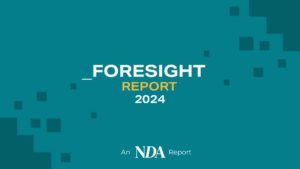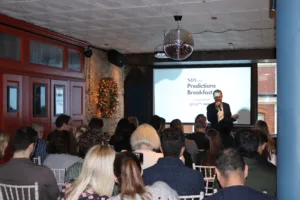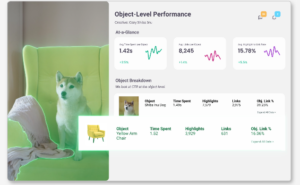By Veronica Arteaga, Associate Account Director at UM London
Artificial intelligence has very easily and very quickly fit into our day to day lives; influencing the way we shop, how we create a to-do list, and even the way in which we find out about the simplest thing, like the weather forecast. The usage of AI products in our homes has moved from having one novelty device, to consistently upgrading to the latest model of Alexa or Google Home.
However, implementing AI within marketing is something that has been overlooked for B2B audiences, most likely due to the fact that their habits are different and the touchpoints to connect with them are more complicated to reach. We are now seeing more brands getting on board with using AI applications to reach audiences and improve their marketing funnel: having a B2B friendly funnel, better insights, and predicting behaviours from a very niche audience.
This trend does not seem to be slowing down. As part of the digital transformation that all businesses are now experiencing, it is expected that new and innovative ways to capture leads will be made through AI offerings. And, given the results of a recent survey conducted by Brightedge, in which 26% of respondents believed that, after consumer personalization, AI will be the next biggest trend in marketing, this will be an expected and welcomed change by consumers.
Through using AI to support on campaigns, marketeers will approach this in a similar way to any other media strategy, i.e. channel selection and how we can determine both the most effective message and channel for future campaigns, campaign analysis, Geo-targeting, etc.
However, when looking further into the details of an AI approach, we can see the added value and where it makes all the difference, in comparison to a more traditional media strategy:
- Optimized Customer Experiences: AI technology helps to predict and optimize results by categorizing the audiences (based on behaviour, engagement on the website, etc.). This is brought to life through personalized content, personalized experience, and relevancy to the audiences. Hence, we see a smoother and better customer experience, avoiding disruption and wastage of advertising budget.
- Direct Email Marketing: Platforms like Facebook Messenger, Instagram Business DMs and Gmail are perfect for using AI to set up automatic and faster replies to their audiences. Beyond that, AI can also be used to predict the conversation and facilitate a Chatbot’s response based on this.
- B2B Lead Generation: Using past campaign data and behavioural data, AI can help to improve the selection of an audience and create a smooth audience journey that can lead to a more positive user experience, with higher outcomes compared to traditional online media.
- Improved Predictions for Future Campaigns: Collating B2B data can be tricky and sometimes marketers turn to 3rd party research companies to run specific studies in order to improve future campaigns. Using AI, we can obtain these type of learnings by analysing past campaigns and collecting ongoing results when implemented in a present campaign. This helps optimize and give more guidance to future strategies, without reaching out to 3rd party research companies.
- Personalized Addressable Content: Through collating this data, when looking at selection of audiences and categorization, marketeers can collaborate with creative agencies in order to deliver personalized addressable content/creative. This is proven to generate better CTR, better ROAS, and when it is done right, improve results connected to lead generation and sales.
Of course, AI within B2B will continue growing. However, it is important to also identify where it is best to use it, as, with any innovative way of reaching audiences, there are still things that are being improved and worked on in the background.
One of the biggest call outs and area of improvement that AI requires, and relies a lot on, is the usage of data – a lot of data. Used to train predictions and provide meaningful results, however, even for big companies, this amount of data is not easily available, or it comes with a lot of restrictions.
Marketeers must be prepared to deliver and educate companies on the requirements when using AI. While B2C companies have a large set of data to deliver analysis, B2B companies do not possess this, and sometimes tend to be very protective of the little data they do have. This leaves us with alternate routes like keywords research or Google Analytics, to work with AI. However, these results may not be as detailed as a client would want.
The big job now for us as marketers, is to educate ourselves and clients, and find the right media partners that are willing to take the time to inform us on the many ways in which we can use AI for B2B clients, who are growing quickly and want to find new ways to use data and predict the best way to generate leads and increase audience engagement. It is our job to be fully prepared to present the best opportunity once the brief is in our hands.









